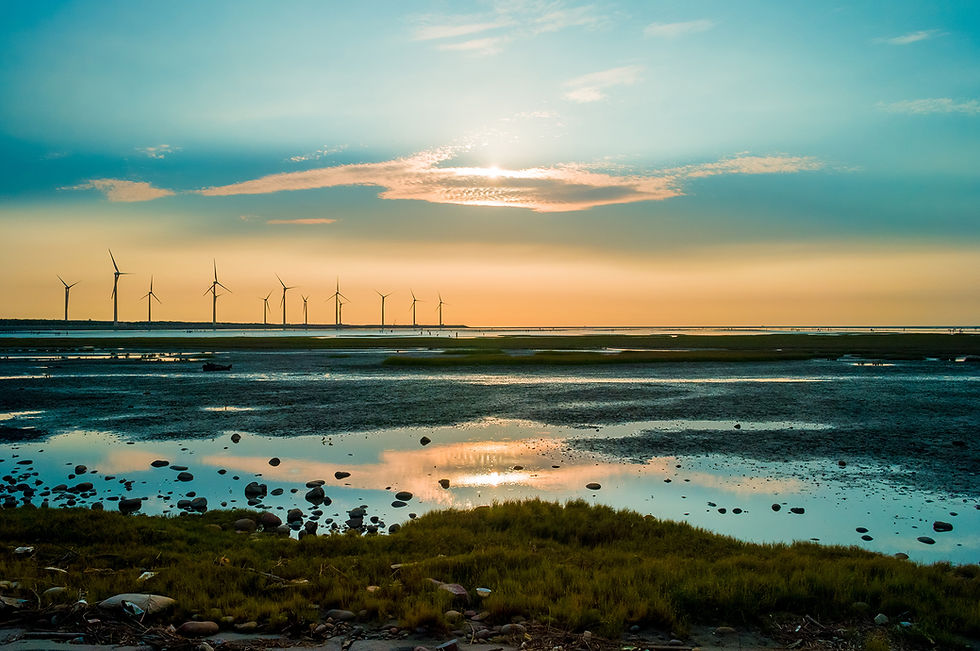"Renewable energy is too expensive"
- Climate Myths
- Jun 22, 2020
- 3 min read
Updated: Jun 23, 2020
“[Wind energy] is a more expensive way of producing energy than the alternative” (David Montgomery).

Many people argue that renewable energy is too expensive to be implemented worldwide, and that its use would hinder the economy. All too many people rely on the belief in a not-yet-invented technology that will perfectly negate environmental concerns. This would be encouraged through monetary enticements, where state policies would benefit those who prioritise eco-friendly models, simultaneously creating an economy in which money is made.
However, the reality is that renewable energy is cheaper, vital even, for the long-term economy. The cheapest option we have is to fight climate change because the longer we wait to take action, the more money will be required to combat its more extreme effects. "To secure economic welfare for all people in these times of global warming, we need to balance the costs of climate change damages and those of climate change mitigation," says climate scientist Anders Levermann from the Potsdam Institute for Climate Impact Research (PIK) in Germany.
To reach their figures, Levermann and his colleagues used the Dynamic Integrated Climate-Economy (DICE) computer simulation developed by the Nobel Laureate of Economics William Nordhaus, specifically built to look at the impacts of climate change. The DICE model weighed up the costs of cutting greenhouse gas emissions (through a reduction in the use of coal) against the costs of further climate change – increasing weather extremes, reduced human labour capacity, and so on. An earlier study from 2015 was used as a guide to how temperature and global gross domestic product (GDP) are connected, with climate change damage starting at zero from 2020 and projected all the way to 2100.
Our current reliance on coal can be likened to an addiction to junk food; it’s cheap and does the job, but is not healthy nor sustainable in the long term, economically and ecologically. Coal is often preferred because, at market price, it is the cheapest energy option. But the real cost of coal does not appear in its market price. These appear in what are called coal externalities, the human and environmental health impacts of its use. A 2013 report published by the International Monetary Fund concluded that global fossil fuel subisides amount to $1.9 trillion annually. $1.4 trillion of this is due to externalities, $800 billion due to climate change. This estimate is based on a conservative social cost of carbon of $25 per tonne of CO2 emitted. An arguably more realistic estimate of $100 per tonne of CO2 would bring global fossil fuel subsidies to over $4 trillion per year, with $3.2 trillion due to climate change. Epstein et al. concluded that coal externalities are triple the cost of coal power (if reflected in monetary terms). If you include coal externalities in its market value, the levalised costs are approx. 18 – 28 cents per kWh, meaning the hydroelectric, onshore wind, geothermal, biomass, and solar thermal energies are cheaper.
The majority of these externalities are not applicable to renewable energies, such as wind or solar. As we turn to more sustainable energy sources, we see the development of a viable green economy. Over the last 15 years, the solar industry has doubled seven times and the wind industry has quadrupled (Ekkert, 2018). In comparison, America’s coal industry has lost 75% of its value in the same time, and the UK relies on coal for only 3% of its energy (Gruenspecht, 2019), highlighting the economic incentives to choose renewable counterparts over coal. Nielsen’s 2015 reportemphasised the potential in the green economy, highlighting how consumers have greater brand loyalty and are willing to pay more for products that are perceived to be less environmentally harmful.




Comments